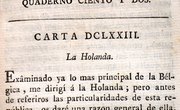Affixes are grammatical elements added to a stem word, including prefixes and suffixes. Prefixes go at the beginning of a word and suffixes at the end. Teaching prefixes and suffixes is an essential part of teaching English. Teaching grammar requires patience and variety. Remember, when teaching any subject, that students learn in a variety of ways. Some prefer visual learning, some audio and some by doing (kinesthetic). Try to factor in all three modes of learning when designing your lesson plan.
Re-introduce known words to your students. Ask them to explain what the words are. These should be words that you can affix a prefix or suffix to, such as "possible" or "teach." Starting with familiar words relaxes your students. Write a few of these words on your board.
Introduce your first prefix or suffix. Ask the student to guess the new meaning. Examples include "-er" as a suffix and "-im" as a prefix. So "teach" plus the suffix "-er" makes "teacher" and the prefix "-im" plus "possible" makes "impossible." Ask the students to repeat after you.
Brainstorm with the students about other words you can add that prefix or suffix to. Write these on the board and ask them again to repeat them all. Other examples of words with the suffix "-er" include "driver" and "buyer." Other examples of the "-im" prefix include "imperfect" and "impolite." Ask each student to think of other words using this prefix and suffix.
Prepare worksheets before the class. After brainstorming and vocal practice, give out the worksheets. Each worksheet you design should contain a variety of activities. This can include adding prefixes or suffixes to words on the sheet, rearranging random letters into words, multiple choice questions, tasks where the students explain the meaning of new prefixes or suffixes and filling in the blanks while listening to you speak. These are quick and simple to design in any word processing program.
Tell the students to exchange papers and check the answers with them. If students make a mistake, give them a chance to self-correct before asking someone else.
Ask students to compose their own sentences using a prefix or suffix of their choice. Check their sentences on a one-to-one basis as they complete them and give them a new challenge.
Introduce the final activity. This should be constructive and/or fun. One example is to play the pairs card game. Prepare a number of flashcard sets. Write prefixes or suffixes on half and write root words on the other. Divide the class into small groups and give each a pack of cards. Lay them face down on the table. Students take it in turn to flip over two cards. If they find a matching pair, they can keep it; if they do not, they let someone else go. The student with the most pairs is the winner.
Try another card game: slam. The students have the root words face up on the table. Again divide them into groups. Write or shout a prefix or suffix and the students must slam their hands on the correct root word. If they get the right one they can keep the card.
Related Articles
References
Writer Bio
Mark Wollacott began writing professionally in 2009. He has freelanced for "Kansai Time Out" and "Kansai Scene" magazines and he has also worked for Travelocity and the Austin Post, writing about travel, business and technology. Wollacott has a Bachelor of Arts in ancient history and archaeology from the University of Wales.











